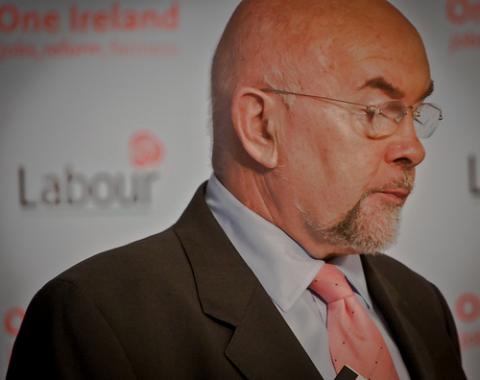There is an alternative to cuts - tax like other Europeans

Ireland should become more like Europeans and junk our nonsensical low-tax model. By Michael Taft.
You can hear the Ministers brushing up on their variants of TINA – there is no alternative. Ruairí Quinn is leading the way:
‘Education Minister Ruairí Quinn insisted that unless Ireland stuck to the fortnightly austerity targets it must deliver to the European Central Bank in Frankfurt there would be no money left in ATMs to pay state wages.’
There is clearly a softening up exercise for even more public spending cuts to come in the next budget – over and above what was laid out in the National Recovery Plan, the EU-IMF bail-out deal and the new Government’s own Stability Programme Update.
So is that it? Are we stuck with this spending cut strategy? Is there really no alternative – given the constraints of the bailout deal?
Yes, there is. After all, we have been told under the EU-IMF bailout deal, fiscally-neutral measures are allowable. In other words, we can substitute Measure A with Measure B, as long as it is of equal fiscal value.
Ok, let’s play in that sandbox. I propose we become more like Europeans and junk this nonsensical low-tax model. When it comes to comparing tax levels in the EU-15 one immediately gets into a sometimes surreal debate over what measure to use – GDP, GNP or GNI. I don’t propose to rehash the arguments. Let’s employ another, hopefully less, contentious measurement – Government revenue per capita. Using the IMF and the Government’s own estimates for Ireland, this is what is projected for 2015.

As can be seen, Ireland is well below the average of the other EU-15 countries. We’d have to increase Government revenue (which is mostly tax revenue but also includes smaller categories like dividends, property income, etc.) by 29.4% just to reach the average. We’d have to nearly double it to reach Danish levels.
When one excludes the Programme countries (those in the bailout – Portugal and Greece) - Ireland falls over 40% behind the average. The Government intends to raise €64.1 billion by 2015. However, were we to reach the average of other EU-15 countries, this figure would rise to €82.9 billion – or a substantial €19 billion more.
Of course, one has to enter a number of caveats, most notably that an economy mired in debt and unemployment (Irish unemployment is expected to be 11%in 2015 compared to an average of 7% in other EU-15 countries) is not likely to generate high levels of income.
And, of course, any attempt to reach European norms by 2015 would crash the economy – piling on that level of tax increases on an economy still trying to emerge from recession would only extend that recession.
However, we can start to move in that direction. For instance, between 2011 and 2015, the average increase in Government revenue per capita is projected to be:
- Ireland: €1,522
- Other EU-15 Countries: €2,355
- Excluding Programme countries €2,664
Not only is Ireland a low-tax regime – we will fall even further behind by 2015. So why can’t we, at the very minimum, increase taxation in line with the rest of the EU-15? We’d still be a low-tax country but at least we’d be keeping pace.
If we matched the non-Programme countries, this would mean an increase of €5.2 billion over and above Government targets by 2015. Given that the Government intends to cut current public spending by €4.3 billion over the next four years (if they keep to the National Recovery Plan targets) – this would give our broken public services a breathing space. Indeed, it would actually help recovery since the ESRI has found that tax increases are far less damaging to economic growth than spending cuts.
Of course, this would still require skilled fiscal management. We would, in the first instance, have to target high-income groups (reliefs, allowances and exemptions), capital, wealth and business income – so that we don’t hurt demand. Eventually, we could start increasing general taxation/social insurance when wage growth resumes (the Government projects that wages per employee will start growing by 2013 and increase after that) – increasing taxation in tandem with wage growth so that, again, we don’t hurt demand. This is do-able.
But how do-able under this Government? So far, the runes are not good. With Minister Bruton having a go at the low-paid and Minister Hogan running around with his window tax, this doesn’t look like a Government yet capable of progressive fiscal management.
But that shouldn’t stop us from having ambitions. Is there an alternative? Yes – it lies in taking lessons from the continent. Let’s start putting together a concrete set of tax proposals – ones that comply with that fiscally-neutral dictum. Let's start identifying new sources for investment. Let’s show a different way.
It’s not too late to save the budget from the austerity-hounds and scare-mongers.
notesonthefront.typepad.com
Image top: infomatique.
{jathumbnailoff}
